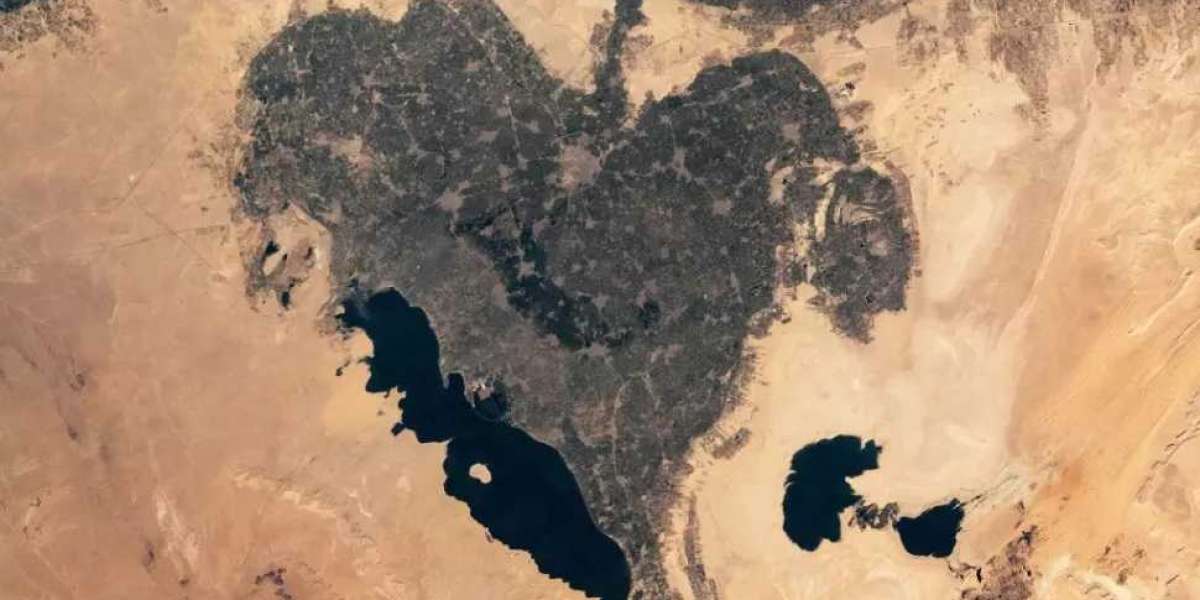A heart-shaped oasis blooming in the Egyptian desert was seen by astronauts aboard the International Space Station (ISS) when they flew 250 miles (400 kilometers) above Earth last May. Our space pals are sharing the striking image as a special Valentine for the entire world today (Feb. 14), courtesy of NASA's Earth Observatory website.
This verdant oasis in the desert, known as the Faiyum Oasis, is actually a large wetland basin that covers 450 square miles (1,200 square kilometers), or roughly one and a half times the size of New York City's five boroughs. According to NASA, the oasis has maintained human life for nearly 8,000 years and served as a staging ground for some of the most ambitious architectural works in ancient history, despite the fact that it is nowhere like as populous as the Big Apple today.
The oasis was formerly a sparkling lake called Lake Moeris, fed by a natural channel of the adjacent Nile River known as the Bahr Yussef. According to the University College London (UCL) geography department, the lake's survival was dependent on seasonal floods from the Nile. When the Nile floodwaters were too low, the kings of ancient Egypt took drastic actions when the Nile floodwaters were too low. There is evidence that a dynasty of pharaohs 4,000 years ago confronted a particularly severe water drought by expanding the Bahr Yussef to manually replenish the region's water supply.
"This was one of the earliest massive national hydrological projects in the world," according to the UCL website. "The 12th Dynasty kings responsible were Amenemhat I-III and they acquired the title of 'engineering kings'."
The ancient lake is now known as Qarun Lake, which is significantly smaller (see NASA's image below the heart). The rest of old Moeris' broad lakebed remains a rich oasis that sustains many villages, cities, farms, and orchards – which you (and the astronauts) can see in the image's gray patchy sections that make up the oasis's heart – thanks to those ancient engineering works.



